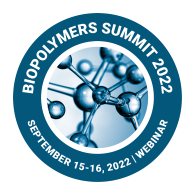New-to-the-world Biopolyesters
Bio-based polyesters are of high interest by academic and industrial scientists and engineers. One member of this family is poly (lactic acid), PLA, is renewable, biocompatible and also biodegradable and is one of the most widely used biopolyesters. PLA is obtained either by ring opening polymerization (ROP) of lactide or by direct polycondensation of lactic acid. Another biopolyester with a wide range of interesting properties are Polyhydroxyalkanoates (PHA). These families of biopolyesters are produced directly by microorganisms from various carbon sources. Efforts are underway to develop more efficient production organisms, use this biological pathway for the production of other biopolyesters such as PLA, develop more efficient downstream processing methods, produce PHAs from waste materials and much more. These are just two examples of a wide family of polymers that have tremendous potential to make important contributions to the introduction of biobased plastics.
- Polyhydroxyalkanoates
- Polylactic Acid
- Biotechnological Production of Polyhydroxyalkanoates
Related Conference of New-to-the-world Biopolyesters
New-to-the-world Biopolyesters Conference Speakers
Recommended Sessions
- Biobased Thermosetting Polymers
- Biocomposite materials
- Biodegradable Polymers
- Biomaterials and Biopolymers
- Bioplastics
- Biopolymer Applications
- Biorefineries and Industrial Biotechnology, Different Uses of Bioplastics
- Future and Scope for Biopolymers and Bioplastics
- Green Chemicals: Biopolymers and Bioplastics
- Nanopolymers
- New-to-the-world Biopolyesters
- Plastic Pollution and Waste Management
Related Journals
Are you interested in
- 3D Printing in Microfluidics - Microfluidics 2026 (Germany)
- AI & Automation in Microfluidic Systems - Microfluidics 2026 (Germany)
- Biomedical Microfluidic Applications - Microfluidics 2026 (Germany)
- Clinical Translation & Commercialization - Microfluidics 2026 (Germany)
- Droplet-Based Microfluidics - Microfluidics 2026 (Germany)
- Lab-on-a-Chip Innovations - Microfluidics 2026 (Germany)
- Microfabrication & Soft Lithography - Microfluidics 2026 (Germany)
- Microfluidic Biosensors & Diagnostics - Microfluidics 2026 (Germany)
- Microfluidic Cell Culture Platforms - Microfluidics 2026 (Germany)
- Microfluidics for Drug Delivery - Microfluidics 2026 (Germany)
- Microreactors & Chemical Processing - Microfluidics 2026 (Germany)
- Nanofluidics & Molecular Transport - Microfluidics 2026 (Germany)
- Organ-on-Chip Engineering - Microfluidics 2026 (Germany)
- Point-of-Care Microdevices - Microfluidics 2026 (Germany)
- Single-Cell Microfluidic Analysis - Microfluidics 2026 (Germany)


